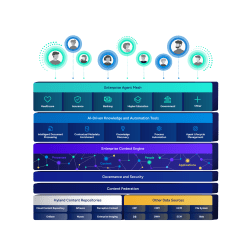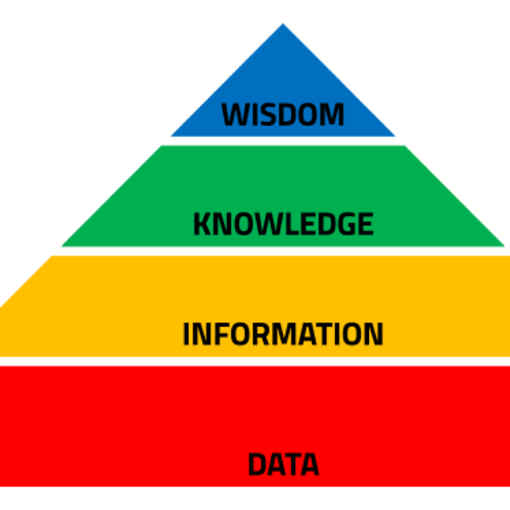Hierarchy of Information
1. Data: the most basic need
“Sales order 1 contains the following: 101, 17, A, GO, $150.00″
“Sales order 2 contains the following: 102, 82, A, GZ, $195.00″
These are examples of Data.
The term Data Processing was used as early as 1950, to describe the collection of data points and the conversion of this data into Information. Just 10 years ago, extracting and storing data from physical documents was still a differentiator for some information management organizations.
Today, it is everywhere, and something even an infomercial can assist with. If an organization’s technologies focus solely on data extraction, and are limited in delivering higher-level capabilities, the organization’s ability to grow is limited as well.
2. Information: use technology to make better decisions
“We sold 1870 A widgets last week.”
This is an example of Information.
By the 1970s, the Information Age was underway. The term Data Processing had given way to Management Information Systems. This is where capabilities like querying, reporting and data aggregation come into play.
Many products, enterprise content management (ECM) solutions being a great example, have reached this hierarchy level, but with varying levels of flexibility. When researching these products, there are questions you should ask:
- Can your end users configure reports?
- And share them?
- On their own?
- Can users view this information and interpret it seamlessly, in the same context as your other information?
- And especially, in the same context as your documents and other unstructured content?
- Is it accessible right when you need it, from a mobile device?
- Does your data warehouse contain copies of the customer contracts, invoices, support requests and help desk tickets that your organization is managing?
-
If not, how do you see this information in a single view?
Once you have those answers, you’re on your way to gaining Knowledge.
3. Knowledge: the current frontier
“Widget sales are cyclical.”
This is an example of Knowledge.
We have seen how many pieces of data you need to aggregate, to produce Information. The same is true of Information’s relationship to Knowledge. Many pieces of Information, brought together in the right context, produce a deeper understanding and Knowledge.
This is where some ECM systems truly differentiate from a functionality perspective.
To support the Knowledge-level of hierarchy, systems should not just be able to interrelate multiple pieces of information. They should excel at it. One example of this is business process management or workflow management.
Again, at this stage of striving for Wisdom, you should have more questions:
- Do your systems allow you to automate the management of work and workflows beyond simple routing of items for approval?
- Can everyone throughout your organization review aggregated data and content for students, accident claims, patients, etc. in your data warehouse?
- On demand?
- As a unified, single pane of glass?
- Are things still configurable by an end user or power at user this level, or is programming required?
- Can your departmental power users own and implement changes that come up from time to time, or do changes require scheduling your IT department resources?
If your business process management simply consists of routing for approval, you may have fake workflow.
4. Wisdom
“Given the cyclicality of widgets, outsource their production in high demand months, to create capacity for wockets.”
This is an example of Wisdom.
Will we ever get here? To a point where systems are making and executing on decisions like this?
The answer isn’t clear. But if Big Data’s promises of analytics (predictive and other) hold true, the future could be a different place indeed.
For now, a system that provides true organizational knowledge is the best way to capture and store information and make it available to the people who need it, when and where they need it. That’s the key to Ndyajunwoha’s Hierarchy of Information Needs™.
Discover our Complete Guide to Digital Transformation















